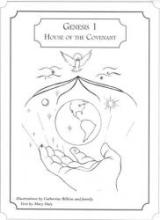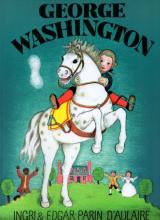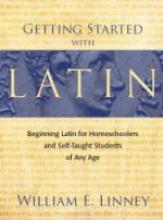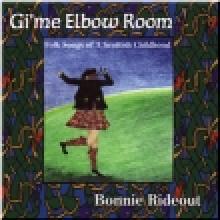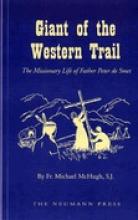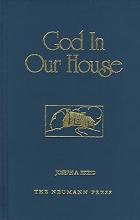No name
Genesis 1: House of the Covenant
8.75x12" heavy paper, suitable for pencils, markers, or crayons
Nihil Obstat
Geography Songs
Geometry: Seeing, Doing, Understanding
Saxon is a tried and true mathematics choice for many homeschoolers, but one complaint about the high school level texts Algebra I and Algebra II is that geometry is included piecemeal in the algebra courses rather than being taught separately in a systematic fashion. Jacobs' Geometry is one alternative for those who find this to be a problem. It is a friendly, thorough approach to high school geometry that starts with an introduction to deductive reasoning and takes the student through to non-Euclidean and coordinate geometry.
The format is very appealing, at least to my high-school age son and myself. The book is divided into chapters covering broad topics like Rays and Angles, Congruent Triangles, and Quadrilaterals. These are subdivided into lessons. Each lesson opens with a cartoon or thought puzzle which draws the student into the topic being discussed. There are three sets of problems in each lesson: the first one usually checks comprehension of concepts and knowledge of theorems, the second set is an application of the lesson to proofs, and the third set, usually a single question, presents a brain-teaser which allows the student to think and ponder creatively.
A Letter to the Student at the beginning tells the story of Pythagoras, the Greek geometer, who taught a reluctant student by paying him for each theorem he learned. By the end of the course, the student was paying Pythagoras. The anecdote sets the tone for the whole book, the assumption being that geometry is a noble, worthwhile endeavor and that a student will realize this and be willing to apply himself to mastery.
Though I haven't used the Jacobs' Algebra, the format looks similar to Geometry. My high-schooler is using it now in short sections as a review. With my next high schooler, I am planning to go from Saxon Algebra ½ to Jacobs' Algebra. There is no book in the Jacobs' series after Geometry; the author Harold Jacobs recommends Algebra II and Trigonometry by Paul A Foerster as the next step before Calculus.
George Washington
It is just like the D'Aulaire's to create a story (complete with beautiful full-color illustrations) that would be interesting and appealing to small children and yet teach more about the character and upbringing of "the Father of Our Country" than most textbooks. The story covers our First President's early childhood – growing up in Colonial America – his adventures (and character) as a young officer during the French and Indian War and, of course, his role in the American Revolution and as president.
Getting Started with Latin
Getting Started with Spanish
Gi'Me Elbow Room, Folk Songs of A Scottish Childhood
Three time national fiddle champion Bonnie Rideout put together an enchanting collection of songs and poems for children on this mp3 album, originally released on CD. She has set traditional poems and nursery rhymes (such as "Bobbie Shafto" and "Wee Willie Winkie") to traditional Scottish tunes and includes familiar songs such as "My Bonnie Lies Over the Ocean" and "Oh Dear, What Can the Matter Be."
The best part of the album are the pieces of original and traditional music set to the poems of Robert Louis Stevenson and an absolutely ingenious adaption of the Yeats poem, "The Fiddler from Dooney."
I cannot praise this album enough, it is extremely well done. As part of our homeschooling we memorize poetry so my children were in awe of a Robert Louis Stevenson "song." The music is irresistible and we are all singing the songs throughout the day. The instruments used in creating the music on various pieces include the following: fiddle, viola, harp, recorder, bodhran, piano, guitar, tin whistle, ocarina, dulcimer, and if you can believe it, coffee can, tinkertoy can and kazoo.
If you and your children like traditional Irish and Scottish music, this mp3 (or CD) album would be a great addition to your collection. It can be ordered from any music store or directly from the music company.
Giant of the Western Trail
Pierre-Jean De Smet (1801-1873) was a beloved missionary in the American West who brought the Gospels and the Catholic Faith to many Indians as well as fighting for peace and justice for the Indians and those suffering from the Civil War. A substantial figure in American history, many may remember from the Little House Books that the city in South Dakota that the Ingalls settled in was named after this renowned priest.
This is a readable interesting story which provides many interesting details about Indian life, the cause of the struggles with the Indians, and the role of Catholics in American history. It really shows a much more favorable side to the Indians than we see in many books as we understand their initial trust of white man and how that trust was betrayed over and over again. (Naturally the details vary from tribe to tribe.) Fr. de Smet founded missions among many of the Indian tribes and played influential roles in a number of important peace councils – particularly his encounters with the legendary Sitting Bull.
One reason I think this book is particularly important is that it shows how progressive Catholic teaching is and was on matters relating to the Indians and their rights. Kind of interesting from a book written in the 1950s! Highly recommended. Most appropriate for grades 5-8.
A great book to read alongside this is Brave Buffalo Fighter by John D. Fitzgerald (Bethlehem Books). It brings the same era to life through the eyes of children on a wagon train.
God In Our House
I always look forward to the new books published by Neumann Press, and this book was worth waiting for! God In Our House is a collection of essays that were originally published on a weekly basis in a Catholic magazine named America. Because this feature of the magazine was so popular, the editors published this book, which Neumann Press has now republished.
Beginning with the First Sunday of Advent and concluding with the Last Sunday After Pentecost, each essay is based on a passage from the gospel reading of the day. All Sundays and many Holy Days are included, with the same format: the passage is cited and followed by an approximately two-page essay or story. The author, a father of five, often uses examples from the daily life of a busy family to explain the passage. His style is so appealing! As you progress through the year, you come to know his family almost as well as the teachings of the gospels.
Our family has a custom of re-reading the Sunday gospels on Sunday evenings, and we try to read from a Catholic book as well. With a wide age-span amongst our children, it has been difficult to find a book suitable and enjoyable for all. This book fits our Sunday evenings perfectly. The reading for the week would also be profitable if it were read before Sunday, perhaps as a part of Friday's religion class or Saturday's preparation for Sunday. It only takes a few minutes, but the lessons learned through these enjoyable stories will remain. Buy this book in the hardcover edition! You will enjoy it THAT much as you read it year after year.
Imprimatur and Nihil Obstat
Also available in softcover: ISBN 1-930873-59-X

